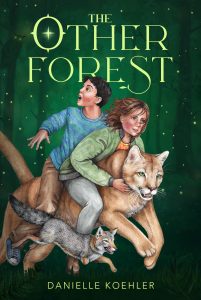Download a PDF of this activity here
Students will learn:
- how trees play a central role in an ecosystem
- how each animal depends on one another, all leading back to their dependance on trees
- the negative impact that deforestation and habitat loss has on local wildlife
Materials
- Ball of yarn/string
- Index cards or sticky notes
- Markers or crayons
Pre-activity discussion
- What do you think a “complex ecosystem” is?
- Name three reasons you think trees (and other shrubs and plants) are important in a complex ecosystem.
- Explain what you think will happen when a connection is broken or disrupted in this complex ecosystem.
Procedure
- About half of the students should be trees. Have all the trees stand in a circle. One tree (student) should start with the ball of yarn and pass it to the next tree, who then passes it to the next, until the circle is complete. If you don’t have enough participants, you can designate random objects as trees and wrap the yarn around them.
- Other students can be insects, birds, and other animals. Have them write their names on their index card or sticky note and designate whether they are herbivores, omnivores, or carnivores. They may also draw pictures if they want.
- Start with the plant-eaters (herbivores and omnivores) finding their place along a line of yarn. They must always be touching the line in order to survive. There may not be more than two plant-eaters sharing a line of yarn.
- Next, carnivores may find their place along the line of yarn. They must always share a line with an animal which would serve as their prey in order to survive. There must always be a greater or equal number of prey to predators along a line. Example: there may not be two pumas and only one rabbit on a line of yarn. One of the pumas would need to leave and find a new line with more prey in order to survive.
- Once every animal has found their place along a line of yarn, admire the complex ecosystem you have created.
- At this point, the teacher or adult present becomes a logger and must find one tree to chop down. That “tree” must drop his or her line of yarn and step away. Now, instead of two lines on either side of that tree, there is only one. Some of the animals along that line of yarn must then relocate in order to survive. Remember that there may not be more than two plant-eaters sharing a line of yarn. There also may not be more predators than prey along a line of yarn. The last animals which cannot successfully find a new line of yarn must step away, as they have not survived.
- Continue the exercise with the logger chopping down trees one by one until there is only one tree left.
- Discuss the chain of events that occurred when one tree was cut down. What happened to the plant-eaters? And how did the loss of plant-eaters affect the carnivores?
Take it further:
In this exercise, we only looked at the importance of plants and animals, but there are other things that make up a complex ecosystem, including soil, water, air, and climate.
Discuss how each would impact the ecosystem. Discuss how humans may cause disturbances to the soil, water, air, and climate and how that may negatively affect an ecosystem.



